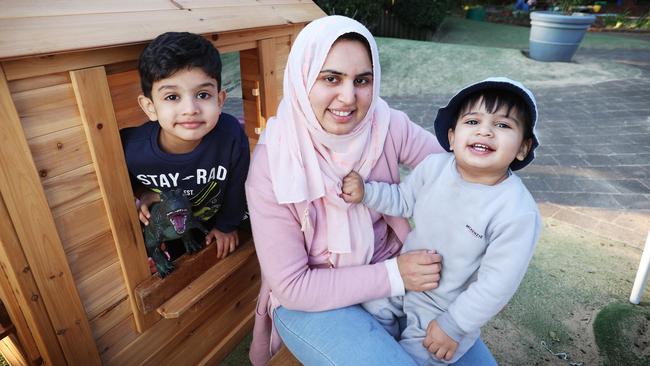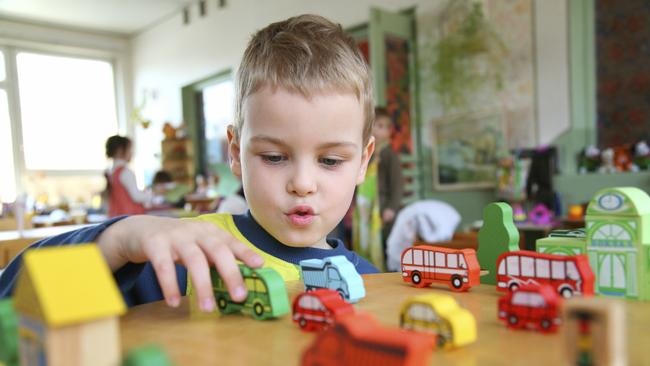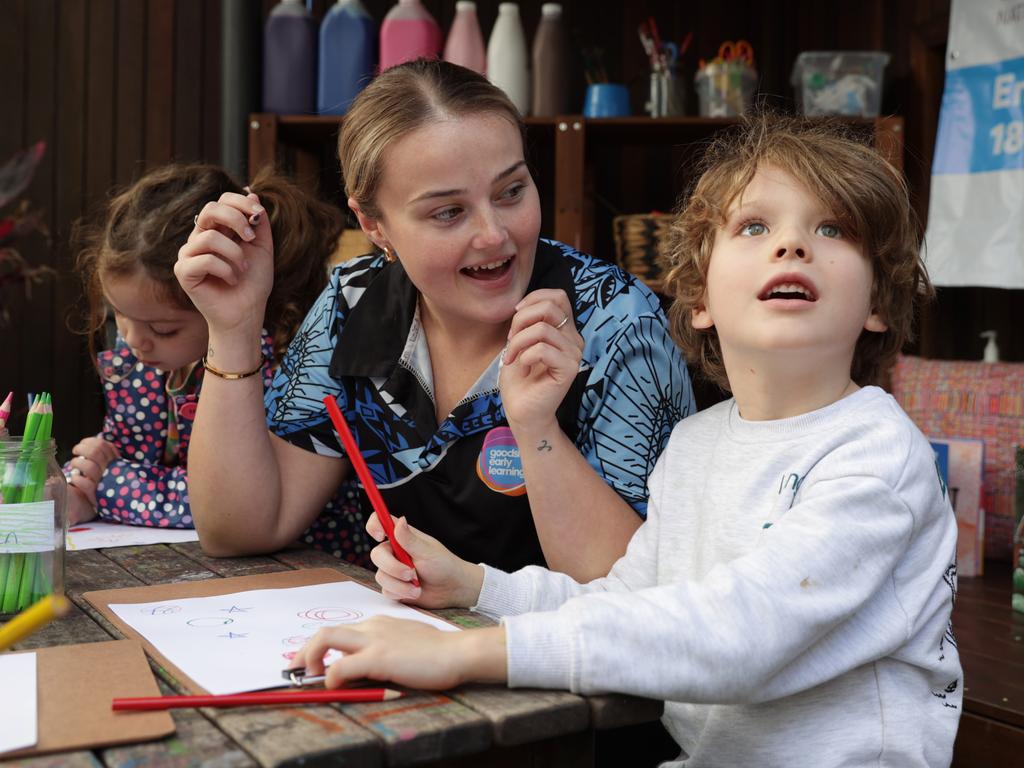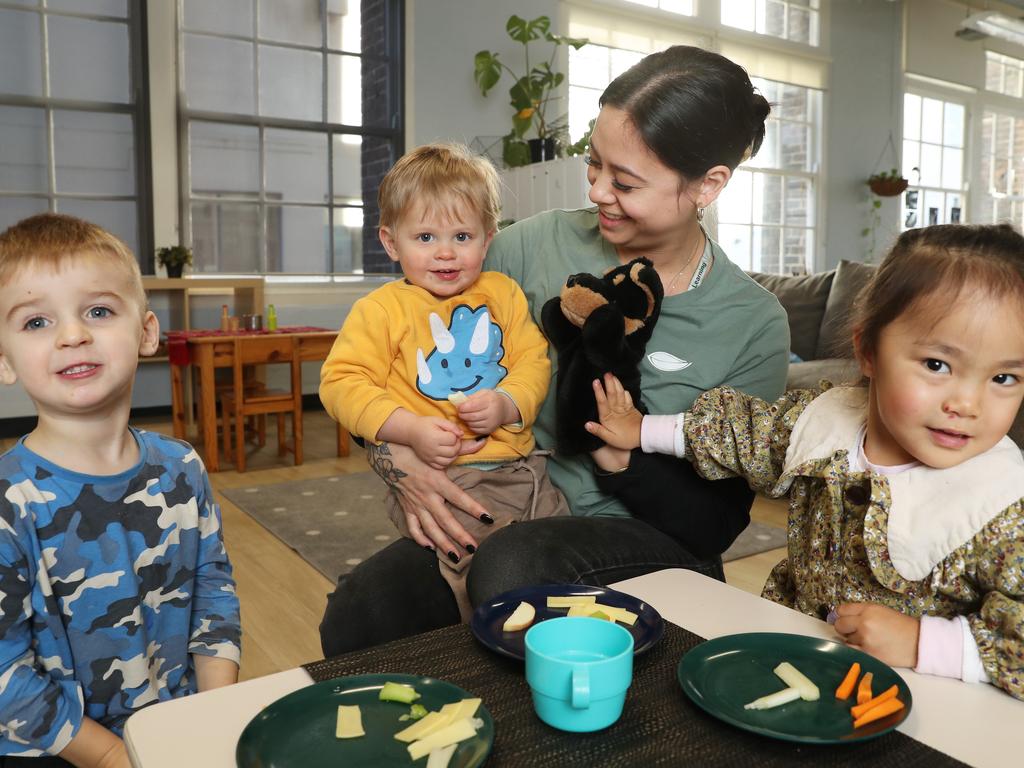Childcare workers win 15 per cent pay rise funded by taxpayers
Taxpayers will directly fund a 15 per cent wage rise for 200,000 childcare workers in a $3.6bn pre-election cash splash that will pump $103 into their weekly pay packets in time for Christmas.

Taxpayers will directly fund a 15 per cent wage rise for 200,000 childcare workers in a $3.6bn pre-election cash splash that will pump $103 into their weekly pay packets in time for Christmas.
Daycare staff will pocket an extra $10,000 a year, on average, and the pay rise will also be given to outside school hours centre workers who usually work part-time.
The deal includes a 10 per cent pay rise in December this year with another 5 per cent next year – on top of any award increases negotiated through enterprise agreements.
In return for the “retention grants‘’ to top-up workers’ pay, childcare centre owners must sign funding agreements to limit their fee increases to 4.4 per cent over the next 12 months.
Anthony Albanese will announce the $3.6bn wage subsidy on Thursday, mirroring his government’s $11.1bn funding of a 15 per cent pay rise for aged-care workers last year.
“This brings together the priorities that drive our government: real help with the cost of living, fair wages for workers, investing in the future and economic equality for women,’’ he will say at the launch in Sydney.
The latest publicly funded wage rise is designed to shore up the early childhood education and care sector, which is suffering staff shortages so severe that children are routinely being turned away from daycare when workers call in sick.
Nationally, one in every 11 long daycare centres is operating without the required number of qualified staff, through a regulatory waiver from the Australian Children’s Education and Care Quality Authority/.
In Western Australia and South Australia, one in six centres is short-staffed.
Staff paid “working poor’’ wages – barely more than the minimum wage of $47,626 – are abandoning the sector for jobs in aged care, the National Disability Insurance Scheme NDIS or the retail and hospitality sectors.
Education Minister Jason Clare said the money – already budgeted in Treasury’s contingency reserve – will enable centres to give staff a pay rise without increasing fees.
“Funding must be passed on in full to employees through increased wages,’’ he said.
“This is a win for workers, a win for families and will help ease cost of living pressures.’’
A typical ECEC educator paid at the award rate will pocket at least $103 per week extra from December, with another $52 per week in December 2025.

Early childhood teachers – who are qualified with a four-year university degree – stand to gain $166 per week extra from December this year, with another $73 per week from December 2025.
The 15 per cent pay rise will be the federal government’s contribution to a multi-employer agreement still being negotiated between 64 employers and the United Workers Union.
The UWU hailed the outcome as a “$10,000-a-year pay rise’’.
Based on the federal government’s calculations, the average increase will be $8060 per year, after two years.
But the UWU is expecting the Fair Work Commission will grant an additional 3 per cent pay rise for award workers in July next year, inflating the average worker’s annual pay by $10,000.
UWU president Jo Schofield said it was “well and truly time for educators to get the pay and conditions they deserve’’. “This wage increase recognises a group of predominantly female workers who have been undervalued for decades, despite providing the social, emotional and educational foundations for Australia’s next generation,’’ she said.
“It means educators will be able to stay in the sector and in the jobs they love.’’
Early Childhood Education Minister Anne Aly said the pay rise was “a wonderful outcome for a highly feminised workforce that has for far too long been neglected and taken for granted’’.
Childcare operator Nesha Hutchinson, who owns Cressy Road Early Learning in the northwestern Sydney suburb of Ryde, was forced to close her central Sydney centre last year due to staff shortages.
“Every time I could get children enrolled, I couldn’t hold onto staff, so ultimately I had to shut the doors,’’ she said.
“I paid them above the award, gave them an extra five days a year wellbeing leave and the centre was staffed above ratio, but I couldn’t get anyone local as they couldn’t afford to live in Surry Hills and work in that job.
“They get paid more to stack shelves at Woolworths at night.’’
Early childhood worker Naima Arshad, who has a mathematics degree from Pakistan, works at the Cressy Road centre so her sons can attend for a discounted fee.
“It’s really hard to survive with the cost of rent and food,’’ she said on Wednesday. “I was a teacher before coming to Australia, and I love this age group.’’
The direct funding of workers’ pay is also designed to keep childcare fees in check, after they soared 8.5 per cent in the 12 months to March.
Taxpayer expenditure on childcare subsidies is pegged to fees, so government payments rise every time childcare centres increase fees.
The federal government – which rebates as much as 90 per cent of childcare fees, based on family income – spent $13.91bn on subsidies in 2023-24. Budget papers show the cost is forecast to hit $15.11bn within two years.
More than 1.4 million children from one million families use childcare – including half Australia’s under-fives attending daycare or preschool, and one in three primary school children attend OSHC.
The Christmas bonus for low-paid workers in a female-dominated “caring profession’’ comes as the federal opposition hammers the government over its public sector spending spree.
The chair of the Senate committee on the cost of living, Jane Hume, said government spending risked fuelling inflation. “Instead of showing restraint in their fiscal policy to be in line with the RBA, the Albanese government has increased spending by $315bn,’’ she said.







To join the conversation, please log in. Don't have an account? Register
Join the conversation, you are commenting as Logout